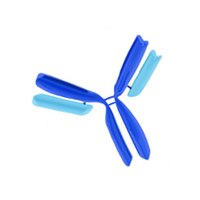IM15L Sigma-AldrichAnti-uPA (Ab-3) Mouse mAb (16)
Recommended Products
Overview
| Replacement Information |
|---|
Key Spec Table
| Species Reactivity | Host | Antibody Type |
|---|---|---|
| H | M | Monoclonal Antibody |
| Product Information | |
|---|---|
| Declaration | Sold under license of U.S. Patent 5,422,245. |
| Form | Lyophilized |
| Formulation | Lyophilized from 20 mM NH₄HCO₃, 100 µg BSA. |
| Positive control | Concentrated conditioned medium from dexamethasone-treated HT-1080 cells |
| Preservative | None |
| Quality Level | MQ100 |
| Biological Information | |
|---|---|
| Immunogen | the B chain of human urokinase plasminogen activator |
| Immunogen | Human |
| Clone | 16 |
| Host | Mouse |
| Isotype | IgG₁ |
| Species Reactivity |
|
| Antibody Type | Monoclonal Antibody |
| Physicochemical Information |
|---|
| Dimensions |
|---|
| Materials Information |
|---|
| Toxicological Information |
|---|
| Safety Information according to GHS |
|---|
| Safety Information |
|---|
| Product Usage Statements |
|---|
| Packaging Information |
|---|
| Transport Information |
|---|
| Supplemental Information |
|---|
| Specifications |
|---|
| Global Trade Item Number | |
|---|---|
| Catalogue Number | GTIN |
| IM15L | 0 |
Documentation
Anti-uPA (Ab-3) Mouse mAb (16) SDS
| Title |
|---|
Anti-uPA (Ab-3) Mouse mAb (16) Certificates of Analysis
| Title | Lot Number |
|---|---|
| IM15L |
References
| Reference overview |
|---|
| Rosenquist, C., et al. 1993. Breast Cancer Res. and Treatment 28, 223. Foekens, J. A., et al. 1992. Cancer Res. 52, 6101. Andreasen, P. A., et al. 1990. Mol. Cell. Endocrinol. 68, 1. Blasi, F. and Verde, P. 1990. in Seminars in Cancer Biology, ed. M. M. Gottesman. Vol. 1, 153. Duffy, M. J., et al. 1990. Cancer Res. 50, 6827. Jänicke, F., et al. 1990. Fibrinolysis 4, 69. Blasi, F., et al. 1987. J. Cell Biol. 104, 801. |







